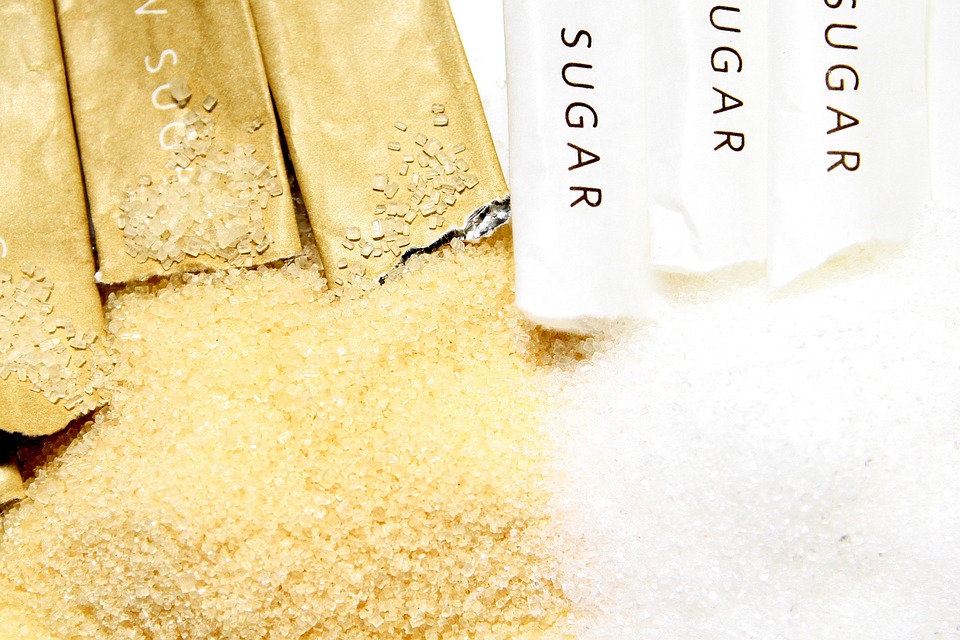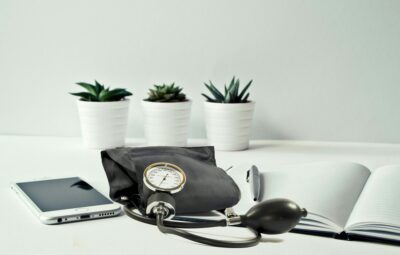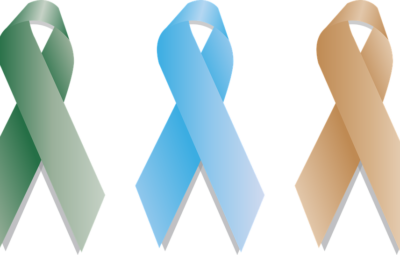A sudden decrease in blood glucose levels is known as a blood sugar crash. The body reacts to consuming sugar by releasing insulin into the circulatory system.
Insulin is a hormone that facilitates glucose entering cells to be employed as fuel and assists in preserving blood sugar within the accepted range. If you have an excess of insulin in your bloodstream, it can cause your blood sugar level to be lower than what is considered healthy.
A sugar crash, or hypoglycemia, usually causes a blood glucose level to drop below 70 milligrams per deciliter (mg/dL). It is typical to have changes in one’s blood glucose levels over the course of the day, yet having low blood sugar can produce serious issues.
Anyone can suffer from a sudden drop in blood sugar, although it is especially common for individuals with diabetes, for whom the body may not produce enough (or any) insulin.
Hypoglycemia that happens to someone without diabetes is referred to as non-diabetic hypoglycemia, and it can be categorized into two forms: reactive hypoglycemia and fasting hypoglycemia. Medications, other health issues, and tumors can all cause these reactions to occur.
What Is a Blood Sugar Crash?
A condition known as hypoglycemia is brought about due to a decrease in one’s blood sugar levels that goes beneath 70 mg/dL. A decrease in blood sugar causes the body to secrete epinephrine, classified as the hormone responsible for the fight-or-flight response. It is what can cause the symptoms of hypoglycemia.
Symptoms
Each person may react to hypoglycemia differently. The symptoms of a blood sugar crash can be mild to severe and include the following:
- Shakiness
- Nervousness or anxiety
- Sweating, chills, and clamminess
- Irritability or impatience
- Confusion
- Fast heartbeat (tachycardia)
- Lightheadedness or dizziness
- Hunger
- Nausea
- Color draining from the skin (pallor)
- Sleepiness
- Weakness or lack of energy
- Blurred or impaired vision
- Tingling or numbness in the lips, tongue, or cheeks
- Headaches
- Coordination problems, clumsiness
- Nightmares or crying out during sleep
- Seizures
If your blood sugar levels dip and remain low, your brain does not get the glucose it needs and can’t operate as it should. This may result in impaired sight, trouble focusing, disorientation, mumbling, lack of sensation, and sleepiness.
If blood glucose levels remain below normal for an extended time period, restricting the brain of necessary glucose, it can result in convulsions, loss of consciousness, and in some seldom cases, death.
Research has demonstrated that individuals do not recognize the signs and perils of hypoglycemia. Research indicated that out of all the times low blood sugar was observed by a CGM, three-quarters of those episodes were not identified by the person experiencing them.
Blood Sugar Balance
The pancreas is one of the organs that are responsible for helping to maintain a balanced blood sugar level. The pancreas keeps the blood sugar in balance if it is working properly, so no other action is required.
The pancreas generally secretes an appropriate amount of insulin (a hormone aiding in transferring energy from the bloodstream into cells) so that the blood sugar levels don’t become too elevated. It generally does not produce so much insulin as to cause the blood sugar levels to drop too much.
The liver also plays an important role in keeping blood sugar levels in check, having the ability to store and discharge sugar to stop hypoglycemia (low blood sugar). The liver can act to conserve the body’s energy sources by secreting glucose into the bloodstream during times of fasting when there is no food intake for a period of at least eight hours, thus preventing hypoglycemia.
The amount of glucose in the bloodstream increases after consuming food, experiencing stress, being ill, and due to other underlying causes. The main reason for a rise in blood sugar levels resulting from dietary habits is the most common. Eats that are high in carbohydrates, like fruits, veggies, grains, pulses, and certain dairy products, when digested, break down into sugar, causing a spike in blood sugar levels. Carbohydrates have a greater effect on blood sugar than both protein and fats.
If the pancreas’s ability to produce insulin is compromised, like in the case of diabetes, regulating blood sugar will be more of a challenge. Consequently, both extremes of blood sugar levels can be experienced. Blood sugar levels that are both above and below the norm require prompt medical attention and treatment.
The primary aim of handling diabetes is to make sure that the blood glucose levels remain in a healthy range between 70-140 mg/dL (milligrams per deciliter). Individuals who do not suffer from diabetes can also experience issues with their blood sugar, including having low blood sugar/hypoglycemia. A sudden drop in blood sugar levels is commonly referred to as a “blood sugar crash.”
Diabetic Blood Sugar Crash
Those suffering from diabetes must regularly test their blood glucose levels and practice good habits to keep their blood glucose levels regulated. Unfortunately, drops in blood sugar levels can occur due to circumstances beyond your power.
Causes
People living with type 1 diabetes, as well as those with type 2 diabetes taking insulin or specified medications, are likely to experience low blood sugar. A person who has type 1 diabetes may endure a couple of cases of mild hypoglycemia every week.
Common causes of blood sugar crashes in people with diabetes include too much insulin or an unbalanced diet:
- Since diabetes medications are taken to lower blood sugar, they may lower the blood sugar levels too much and lead to hypoglycemia. Accidentally injecting the wrong insulin type or injecting it directly into the muscle (instead of just under the skin) can also cause low blood sugar.
- If someone with diabetes isn’t eating enough food or lowers their glucose intake significantly, levels will drop. Not enough carbohydrates or eating foods with fewer carbohydrates than usual without reducing the amount of insulin taken can contribute to hypoglycemia. Timing of insulin based on whether your carbs are from liquids or solids can affect blood sugar levels as well. Liquids are absorbed much faster than solids, so timing the insulin dose to the absorption of glucose from foods can be tricky. The composition of the meal—the amount of fat, protein, and fiber—can also affect the absorption of carbohydrates.
Treatment
The most effective means of dealing with a minor decline in blood sugar levels is to adhere to the 15-15 rule. It helps slowly bring blood sugar levels up.
It is not beneficial to consume large amounts of sugar as a means to increase one’s blood sugar level. This can have the undesirable result of resulting in a sudden increase in the blood sugar level. In accordance with the 15-15 rule, you ought to ingest 15 grams of carbs so as to elevate your blood glucose and check your blood glucose amount within 15 minutes after. If it’s still below 70 mg/dL, have another serving.
Food or supplements that contain 15 mg of carbohydrates include:
- Glucose tablets
- Gel tube
- 1/2 cup of juice or regular soda
- 1 tablespoon of sugar, honey, or corn syrup
- Hard candies, jellybeans, or gumdrops
Foods rich in complex carbohydrates and containing fats, such as chocolate, will impede the speed at which glucose is absorbed and ought not to be utilized to treat a hypoglycemic episode.
Monitor your indicators and instances of hypoglycemia and inform your medical practitioner. If your condition is serious or medicine is not having any effect, you should, without delay, contact your healthcare provider or call emergency services.
Prevention
Checking your blood sugar level regularly is the best way to avoid low blood sugar. The lower the frequency of someone’s blood sugar being monitored, the greater the possibility of them experiencing hypoglycemia. This is beneficial because it allows you to detect when your blood sugar levels are declining, giving you the opportunity to address it prior to it reaching a dangerously low level.
If you have diabetes, check your blood sugar at the following times:
- Before and after meals
- Before and after exercise (or during if it’s a long or intense session)
- Before bed
- In the middle of the night, after intense exercise
It is recommended that you monitor your blood glucose more frequently if you make any alterations, such as a new insulin routine, altered working hours, heightened exercise, or journeying transversely across time zones.
What Is a Continuous Glucose Monitor?
A continuous glucose monitor can be used in addition to a glucometer to track one’s blood sugar levels. These monitors are electronic items that can be worn all day and easily accessed to retrieve data whenever required. The use of these monitors makes it easy to spot sudden increases or decreases in your blood glucose level so that any irregularities can be dealt with quickly.
There are other things you can do to avoid a blood sugar crash if you have diabetes, including:
- Eating a balanced diet.
- Avoiding sugary foods and drinks outside of mealtimes.
- Eating small portions.
- Avoiding restricting or cutting out full food groups.
- Planning ahead.
- Keeping your healthcare provider in the know.
How to Reverse a Sugar Crash
If your blood sugar is below 70 mg/dL, you should treat it by eating or drinking something that has 15 grams of carbohydrates in it. Soft drinks and lollies are liked as they are quickly taken up into the bloodstream. It does not require a great deal of energy to reach 15 grams of carbohydrates; somewhere in the region of half a cup is sufficient.
Glucose tablets are widely used to address issues caused by low blood sugar levels due to their convenience of being accessible in various circumstances. They break down rapidly and offer unadulterated glucose so that it can be quickly taken into the circulation system as glucose. For a sugar crash, it’s recommended to consume 3 to 4 tablets, each containing 4 grams of carbohydrates, for a total of 12 to 16 grams of carbohydrates.
Meals that are primarily made up of protein and fat, like cheese and peanut butter, should not be consumed to help combat a sudden drop in blood sugar levels. Including protein and fat with carbohydrate-rich foods may prevent sugar levels from dropping too quickly.
If levels of glucose in the bloodstream are still below 70mg/dl after receiving treatment and/or if the person is unconscious or unresponsive, then a glucagon emergency kit may be applied.
A doctor must administer glucagon through a syringe. Glucagon is a hormone that aids in transforming glycogen, the sugar kept by the body, into glucose in the bloodstream. Glucagon can be used as a way to raise the blood sugar levels of someone who has experienced a sugar crash and is unable to consume food or liquids, as it can be administered through an injection given by another individual.
Preventing Blood Sugar Crashes
- Eat consistently. Eating a variety of foods, including protein, fat, and carbohydrates, every few hours can help keep blood sugar levels stable. Some people find that eating protein helps promote steady blood sugars and prevent sugar crashes. For example, eating cheese with fruit instead of just fruit can help slow the breakdown of those carbs into blood sugar, thus promoting more stable blood sugar levels.
Those with reactive hypoglycemia can manage it by avoiding simple sugars like soda and candy, which cause the pancreas to produce too much insulin. This rapid production of insulin leads to a sudden drop in blood sugar levels – otherwise known as ‘sugar crashes’. To avoid this reaction, it’s suggested that individuals with reactive hypoglycemia opt for complex carbohydrates such as fruit or whole-grain bread along with protein or healthy fats.
- Take insulin and medications as prescribed. While very useful, insulin is a potentially dangerous medication because of its immediate effectiveness at reducing blood sugar. Insulin should only be used under the guidance of a healthcare provider and only as prescribed. If someone’s blood sugar levels are high, they should discuss it with their healthcare provider and never change insulin doses independently.
- The timing of insulin is also very important. A rapid-acting insulin is designed to be taken a few minutes before starting a meal. If someone forgets to take their rapid-acting insulin, it can often be safer to skip that dose instead of taking it several hours after the meal.
- Use snacks as a tool. For someone prone to sugar crashes, snacks can be a very useful tool in preventing them. Having a snack before exercising or before taking a bedtime dose of insulin can help offset the blood sugar-lowering effects of these things.
- Don’t drink alcohol on an empty stomach. Drinking alcohol can lower blood sugar. Suppose someone taking diabetes medications chooses to drink. In that case, they should be sure to eat something first, as drinking alcohol on an empty stomach can worsen hypoglycemia and cause a sugar crash.
Conclusion
The phrase “sugar crash” is another way of describing hypoglycemia, or a decrease in one’s blood sugar levels. Blood sugar is thought to be too low if it registers at less than 70 milligrams per deciliter. A drop in blood sugar levels can be hazardous and lead to loss of consciousness, a comatose state, and even death when severe enough. Some signs that indicate low blood sugar are trembling or feeling unsteady, perspiration, cravings for food, being easily agitated or grouchy, feeling nervous, and having a headache.
People both with and without diabetes, can experience drops in their blood sugar levels. This condition can be caused by having too much insulin, taking diabetic medication, not getting enough to eat, or consuming something with lots of simple sugars.
Consumption of balanced meals and snacks and avoidance of food and beverages with a high concentration of simple sugars can help reduce episodes of sudden energy loss due to a plunge in blood sugar levels. For those living with diabetes, avoiding dangerous drops in their blood sugar levels can be achieved by adhering to the medications their doctor prescribed and going to regular check-ups with their healthcare provider concerning their diabetes.
Those who do and those who don’t have diabetes can both experience sugar lows, though the causes vary. Tracking your blood glucose levels is the most effective way to prevent a sudden decrease in your blood sugar if you have diabetes. Consult with your doctor if you are not diagnosed with diabetes to discover what may be causing your sugar level to decrease and what alterations you must implement.







